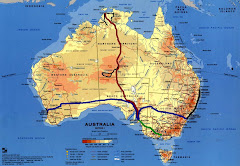 Look like those Asian Balls with something in it which makes music. You roll them around in one hand to calm yourself down.
Look like those Asian Balls with something in it which makes music. You roll them around in one hand to calm yourself down.First set aside in Colonel William Light's city plan for Adelaide in 1838, it wasn't until 1854, after a public appeal to Governor Sir Henry Young that gardens were established at the current location. They were founded the following year and officially opened in 1857. The garden's design was influenced by the Royal Gardens at Kew, England and Versailles, France.
One of the garden's nineteenth-century directors was the botanist Dr Richard Moritz Schomburgk, brother to the German naturalist Robert Hermann Schomburgk. He was a major advocate for the establishment of forest reserves in the increasingly denuded South Australian countryside.[1]
Amongst other scientific and educational displays of native and international horticulture, the gardens hold one of the world's only propagated Wollemi Pine trees.

 The Palm, or tropical, house is a Victorian glasshouse located to the west of the main lake. It was imported from Bremen, Germany in 1875 , opened in 1877 and restored in 1995. As of 2007 it held a collection of Malagasy arid flora.
The Palm, or tropical, house is a Victorian glasshouse located to the west of the main lake. It was imported from Bremen, Germany in 1875 , opened in 1877 and restored in 1995. As of 2007 it held a collection of Malagasy arid flora.
Wow - these are a kind of rare Asian water Lily's. Really special. They like it humid.




 Wow - architecture which dares to dream.
Wow - architecture which dares to dream.As part of Adelaide's celebration of the Australian Bicentenary the conservatory was constructed in 1987 and opened in late 1989. The building was designed by local architect Guy Maron and has won awards for its design, engineering and landscaping. It is 100 metres (328 ft) long, 47 metres (154 ft) wide and 27 metres (89 ft) high making it the largest single span conservatory in the southern hemisphere. The conservatory houses at risk or endangered tropical rainforest plants from northern Australia, Papua New Guinea, Indonesia and south Pacific Islands. The conservatory is sometimes affectionately called "The Pasty" by locals, because of its resemblance to a massive semicircular stuffed pastry.














No comments:
Post a Comment